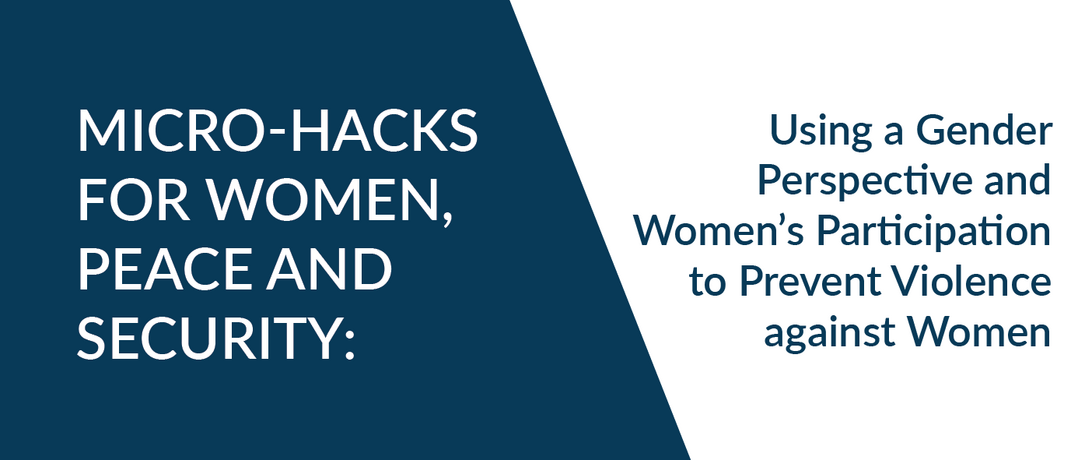
OSF provides five ways that crucial tenets of the WPS agenda can be used to prevent violence against women.
Passed unanimously in October 2000, United Nations Security Council Resolution 1325 on the Women, Peace and Security (WPS) agenda is much more than an acknowledgment of the unique vulnerabilities of women and girls in conflict. It is a statement of emphatic support of the important role that women play in peacekeeping, conflict resolution, and governance.
The resolution actively encourages UN member states to use a gender perspective in their work and to increase the participation of women in peace and security and political decision-making. In fact, increased use of a gender perspective and the inclusion of women also provide for women’s protection. Here are five ways that these crucial tenets of the WPS agenda can be used to prevent violence against women:
- Peace and Security Operations: Increasing the number of women in policing and peacekeeping personnel correlates with increased reporting of sexual and gender-based violence due to perceptions that female officers are more approachable. This translates to higher effectiveness as female officers are also more likely to respond effectively to cases of domestic violence.
- Political Leadership: When more women are in positions of political power, they are more likely to create gender-sensitive policies to prevent violence against women.
- Conflict Resolution: The use of a gender perspective or “gender-positive” framing of peace processes better guarantees that protections against sexual and gender-based violence will be put into place.
- Women Peacebuilders: When women are included in peace processes, they are 64 percent less likely to fail and 35 percent more likely to last at least 15 years. This means that women’s participation reduces violence not only against women but also against whole communities and even countries.
- Aid and Development: The use of a gender perspective ensures the needs of men, women, boys, and girls alike are being met by development, aid, and security operations and that women are less vulnerable to violence.
*To learn more about the effectiveness of the Women, Peace and Security agenda, see our publication, Women, Peace and Security by the Numbers.
Article Details
Published
Topic
Program
Content Type
Opinion & Insights